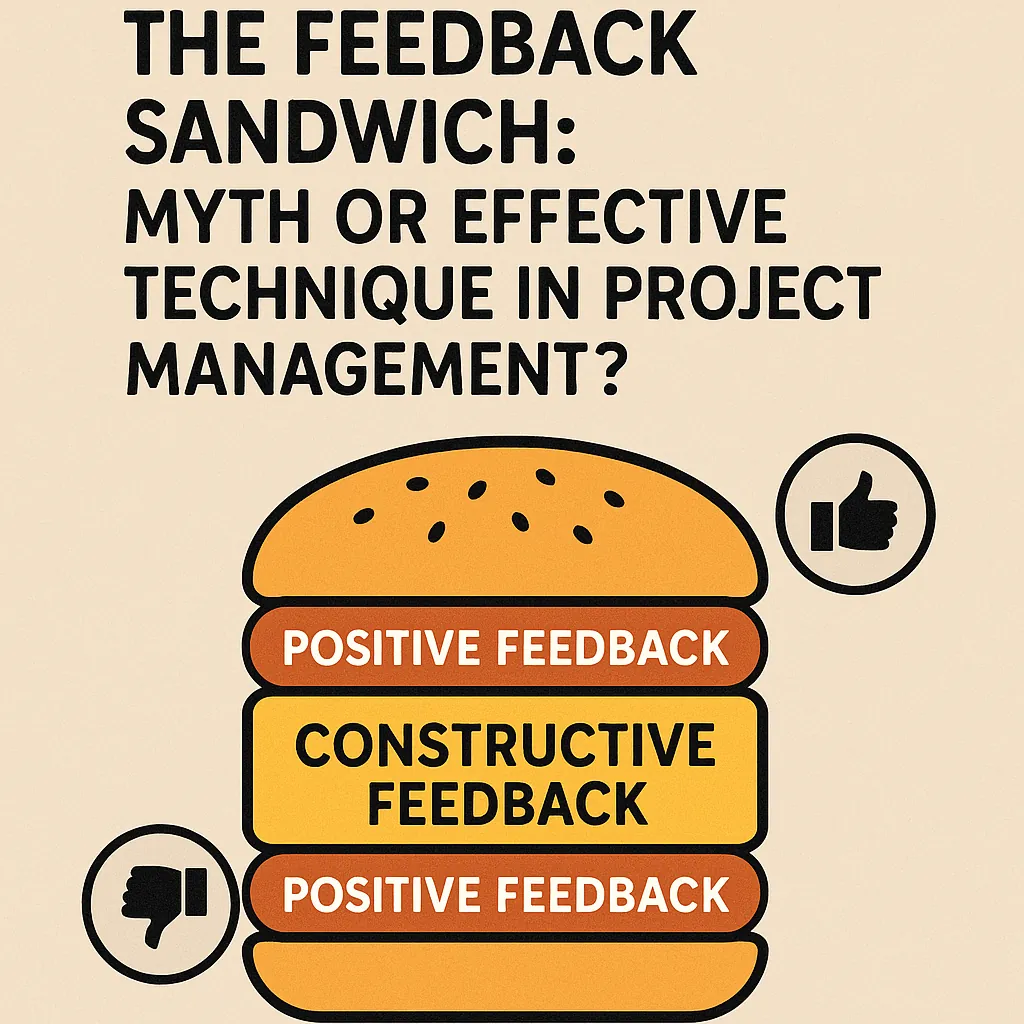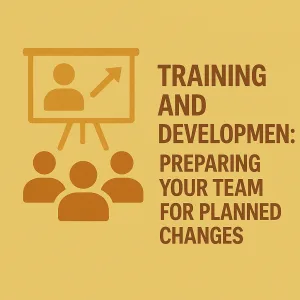Introduction
Effective communication is paramount, and feedback plays a crucial role in fostering team development and project success. One popular method that has gained traction in various industries is the feedback sandwich technique. This approach involves delivering constructive criticism by “sandwiching” it between two pieces of positive feedback.
- Definition of the Feedback Sandwich Technique: The feedback sandwich is a communication strategy that begins with positive remarks, follows with constructive criticism, and concludes with additional praise. This method aims to soften the impact of negative feedback, making it more palatable for the recipient while encouraging a positive atmosphere for discussion and growth [6][15].
- Overview of Its Popularity in Various Industries: The feedback sandwich has become a common practice not only in project management but also in fields such as education, healthcare, and corporate training. Its widespread use stems from the belief that it can help maintain morale while addressing areas for improvement. Many organizations have adopted this technique as part of their performance review processes, believing it fosters a supportive environment where team members feel valued and motivated [8][15].
- Importance of Effective Feedback in Project Management: In project management, the ability to provide and receive feedback effectively is essential for team cohesion and project success. Constructive feedback helps team members understand their strengths and areas for improvement, ultimately leading to enhanced performance and productivity. When feedback is delivered thoughtfully, it can lead to better project outcomes, increased accountability, and a culture of continuous improvement within the team [4][9].
As we delve deeper into the feedback sandwich technique, we will explore its effectiveness in real-world scenarios, examining both its advantages and potential pitfalls in the context of project management. This analysis will help project managers and team leaders determine whether this method is a valuable tool or merely a myth in the landscape of feedback practices.
Understanding the Feedback Sandwich
The feedback sandwich, often referred to as the “compliment sandwich,” is a widely recognized technique in project management for delivering feedback effectively. This method involves structuring feedback in a way that cushions constructive criticism between two layers of positive feedback. Here’s a closer look at its components, psychological rationale, and how it compares to other feedback methods.
Structure of the Feedback Sandwich
- Positive Feedback: The first layer involves providing genuine praise or acknowledgment of what the individual or team has done well. This sets a positive tone for the conversation and helps to build trust between the feedback giver and the recipient. It is essential that this praise is specific and relevant to the individual’s contributions to the project.
- Constructive Criticism: The middle layer contains the constructive feedback, which addresses areas for improvement or specific issues that need to be corrected. This part should be clear and focused, avoiding vague language that could lead to misunderstandings. The goal is to provide actionable insights that the recipient can use to enhance their performance.
- Closing Positive Feedback: The final layer returns to positive feedback, reinforcing the recipient’s strengths and encouraging them to continue their good work. This closing remark serves to uplift the individual after discussing the more challenging aspects of their performance, leaving them with a sense of motivation and support.
Psychological Rationale
The effectiveness of the feedback sandwich can be attributed to two key psychological factors: positive reinforcement and the impact of negative feedback. Positive reinforcement helps to affirm the recipient’s value and contributions, making them more receptive to the subsequent criticism. When individuals feel appreciated, they are more likely to view feedback as a tool for growth rather than as a personal attack. This approach can foster a culture of continuous improvement and open communication within project teams [2][12].
Comparison with Other Feedback Methods
While the feedback sandwich is a popular technique, it is not without its criticisms. Some argue that it may dilute the impact of the constructive criticism, as the recipient might focus more on the positive comments rather than the areas needing improvement. This can lead to a lack of clarity regarding the necessary changes [5][9].
In contrast, other feedback methods, such as direct feedback or the “radical candor” approach, emphasize honesty and straightforwardness without the cushioning effect of positive remarks. These methods can be effective in situations where immediate action is required, such as when a project is under tight deadlines and critical errors have been made. In such cases, clear and direct feedback may be more beneficial than a softened approach [1][7].
Ultimately, the choice of feedback method should be tailored to the specific context and the individuals involved. Understanding the strengths and limitations of the feedback sandwich can help project managers and team leaders decide when to use it effectively and when to opt for a more direct approach [13][14].
The Benefits of the Feedback Sandwich
The feedback sandwich technique, which involves layering constructive criticism between two positive comments, has garnered attention in project management for its potential advantages. Here are some key benefits of employing this method in real-world scenarios:
- Reduces Defensiveness in Team Members: By starting with positive feedback, the sandwich method creates a more receptive environment for criticism. This approach minimizes defensiveness, allowing team members to be more open to receiving feedback and making necessary adjustments to their performance [10][13].
- Encourages Open Communication and Trust: The feedback sandwich fosters an atmosphere where team members feel safe to express their opinions and concerns. This open communication is crucial for building trust within the team, as it demonstrates that feedback is a two-way street, promoting a culture of collaboration and mutual respect [4][14].
- Promotes a Positive Work Environment and Team Morale: Acknowledging employees’ strengths and achievements through positive feedback can significantly boost their self-esteem and confidence. This recognition not only enhances individual morale but also contributes to a more positive overall work environment, which is essential for team cohesion and productivity [7][11].
- Facilitates the Delivery of Difficult Messages: The feedback sandwich technique is particularly useful when addressing challenging issues. By framing criticism within a context of appreciation, project managers can communicate difficult messages without demoralizing team members. This method helps ensure that the conversation remains constructive and focused on improvement rather than solely on shortcomings [5][9][15].
Critiques of the Feedback Sandwich
The feedback sandwich technique, which involves presenting constructive criticism between two pieces of positive feedback, has gained popularity in project management as a way to soften the impact of negative comments. However, this method is not without its critiques. Below are some of the key drawbacks and common criticisms associated with the feedback sandwich approach:
- Perceived Insincerity: One of the most significant criticisms of the feedback sandwich is that it can come across as insincere or formulaic. When managers use this technique, employees may feel that the praise is merely a tactic to cushion the criticism rather than genuine acknowledgment of their efforts. This perception can lead to a lack of trust in the feedback process, as employees might question the authenticity of the positive comments surrounding the critique [5][13].
- Dilution of Constructive Feedback: The sandwich method may dilute the importance of the constructive feedback being provided. When criticism is wrapped in praise, employees might focus more on the positive aspects and overlook the areas needing improvement. This can hinder their professional growth and development, as they may not fully grasp the significance of the feedback being offered [1][4].
- Potential for Confusion: If not executed properly, the feedback sandwich can lead to confusion among team members. The mixed messages of praise and criticism can create uncertainty about what is truly valued or what needs to be addressed. This confusion can result in employees feeling unsure about their performance and the expectations set for them [5][10].
- Real-World Testimonials: Many project managers have shared their experiences with the feedback sandwich technique, often highlighting its ineffectiveness in practice. For instance, some have reported that after using the method a few times, team members become attuned to the pattern of praise-criticism-praise, leading them to dismiss the feedback altogether. This recognition can render the technique ineffective, as employees may start to anticipate the criticism and disregard the accompanying praise [6][12].
Real-World Scenarios: Success Stories and Failures
The feedback sandwich technique, which involves delivering constructive criticism between two positive comments, has been a topic of debate among project managers and team leaders. While some advocate for its effectiveness in fostering a supportive environment, others criticize it for potential insincerity. Here, we explore real-life examples that illustrate both successful implementations and failures of the feedback sandwich method in project management.
Successful Implementation in High-Performing Teams
- Enhanced Team Morale: In a high-performing tech team, a project manager utilized the feedback sandwich during performance reviews. The manager began by praising the team’s innovative solutions, followed by constructive feedback on improving communication during project updates, and concluded with encouragement about their potential for future projects. This approach not only maintained team morale but also led to improved communication practices, resulting in a more cohesive team dynamic and successful project outcomes [2][10].
- Effective Conflict Resolution: A project manager faced a situation where a team member was consistently missing deadlines. By employing the feedback sandwich, the manager first acknowledged the employee’s strong analytical skills, then addressed the issue of missed deadlines, and finally expressed confidence in the employee’s ability to improve. This method led to a productive discussion about time management strategies, ultimately enhancing the employee’s performance and the team’s overall productivity [12][15].
Examples of Failed Feedback Sandwich Attempts
- Perceived Insincerity: In a marketing team, a project leader attempted to use the feedback sandwich approach during a project debrief. However, the team members felt that the positive feedback was not genuine and merely a formality. The criticism that followed was met with defensiveness, leading to a breakdown in communication. This experience highlighted how the feedback sandwich can backfire if the positive comments are not authentic, resulting in decreased trust and morale within the team [3][4].
- Confusion and Mixed Messages: A project manager in a construction firm tried to implement the feedback sandwich during a project review meeting. The manager praised the team’s efforts on safety protocols, followed by criticism regarding project delays, and ended with encouragement about future projects. However, the team was left confused about the primary message. The mixed signals led to frustration, as team members felt the criticism overshadowed the praise, ultimately affecting their motivation and engagement in subsequent projects [8][12].
Insights from Project Managers and Team Leaders
- Authenticity Matters: Many project managers emphasize the importance of authenticity in feedback. A project leader noted, “If the positive feedback feels forced, it undermines the entire conversation. Genuine recognition is crucial for the feedback sandwich to work” [3][15].
- Tailoring Feedback: Some leaders advocate for tailoring the feedback approach to individual team members. A project manager shared, “I’ve found that some team members respond better to direct criticism without the sandwich. It’s essential to know your team and adjust your approach accordingly” [10][12].
- Focus on Solutions: Another insight from project managers is the need to focus on solutions rather than just pointing out problems. One leader stated, “When I provide constructive feedback, I always try to suggest actionable steps for improvement. This turns the conversation into a collaborative effort rather than just a critique” [6][12].
Best Practices for Giving Feedback
Delivering effective feedback is essential for fostering team performance and enhancing communication. While the feedback sandwich method—where constructive criticism is flanked by positive remarks—has gained popularity, it is crucial to evaluate its effectiveness and consider alternative approaches. Here are some best practices for providing feedback that can help project managers and team leaders navigate this complex task.
Tailoring Feedback to Individual Team Members’ Needs
- Personalization: Recognizing that each team member has unique strengths, weaknesses, and communication styles is vital. Tailoring feedback to fit individual needs can enhance its effectiveness. For instance, some team members may respond better to direct criticism, while others may require a more supportive approach to feel motivated [10][12].
- Specific Examples: When providing feedback, be specific about what was done well and what needs improvement. This clarity helps team members understand the context and the rationale behind the feedback, making it more actionable [10].
Timing and Context Considerations for Feedback Delivery
- Timeliness: Feedback should be delivered as close to the event as possible. This immediacy allows team members to connect the feedback with their actions, making it more relevant and impactful [3][12].
- Context Matters: Consider the setting in which feedback is given. Formal feedback sessions, such as quarterly reviews, can be beneficial for structured discussions, while informal feedback can be more effective for spontaneous recognition or quick corrections [2][3].
Encouraging Two-Way Communication and Follow-Up Discussions
- Dialogue Over Monologue: Effective feedback is not just about delivering a message; it should encourage a two-way conversation. Allow team members to express their thoughts and feelings about the feedback, fostering an environment of openness and trust [11][12].
- Follow-Up: After providing feedback, it is essential to follow up with team members to discuss their progress and any challenges they may face. This ongoing dialogue reinforces the feedback and demonstrates your commitment to their development [10][12].
Alternative Feedback Methods Worth Considering
- Direct Feedback: While the feedback sandwich can soften criticism, it may dilute the message. Some experts suggest that being straightforward and specific about areas for improvement can be more effective, especially when the feedback is constructive and sincere [6][10].
- 360-Degree Feedback: This method involves gathering feedback from various sources, including peers, subordinates, and supervisors. It provides a comprehensive view of an individual’s performance and can highlight areas for growth that may not be visible from a single perspective [11].
- Regular Check-Ins: Instead of relying solely on formal feedback sessions, consider implementing regular check-ins. These informal conversations can help maintain open lines of communication and allow for timely feedback that is relevant to ongoing projects [3][12].
Conclusion
The feedback sandwich technique has garnered attention for its unique approach to delivering constructive criticism. This method, which combines positive feedback with constructive criticism, offers several benefits and limitations that project managers and team leaders should consider.
Benefits of the Feedback Sandwich:
– Softens the Impact of Criticism: By starting and ending with positive remarks, the feedback sandwich can make the delivery of criticism feel less harsh, thereby reducing defensiveness and fostering a more open dialogue [2][5].
– Encourages Constructive Conversations: This technique can facilitate discussions around behavioral issues and conflicts, allowing for a balanced exchange that promotes understanding and growth [5][12].
– Enhances Team Morale: When executed effectively, the feedback sandwich can help maintain a supportive atmosphere, encouraging team members to feel valued while also addressing areas for improvement [6][12].
Limitations of the Feedback Sandwich:
– Potential for Misinterpretation: Some research suggests that the sandwich method may lead to confusion, as recipients might focus more on the positive feedback and overlook the constructive criticism [8][12].
– Risk of Insincerity: If not delivered thoughtfully, the feedback sandwich can come across as disingenuous, potentially undermining trust between team members [12].
– Not Universally Effective: The effectiveness of this technique can vary based on individual personalities and team dynamics, making it essential for project managers to tailor their approach [12].
Given these insights, it is crucial for project managers and team leaders to assess their individual team dynamics when selecting feedback methods. What works for one team may not resonate with another, and understanding the unique characteristics of your team can lead to more effective communication.
Find out more about Shaun Stoltz https://www.shaunstoltz.com/about/.
This post was written by an AI and reviewed/edited by a human.



